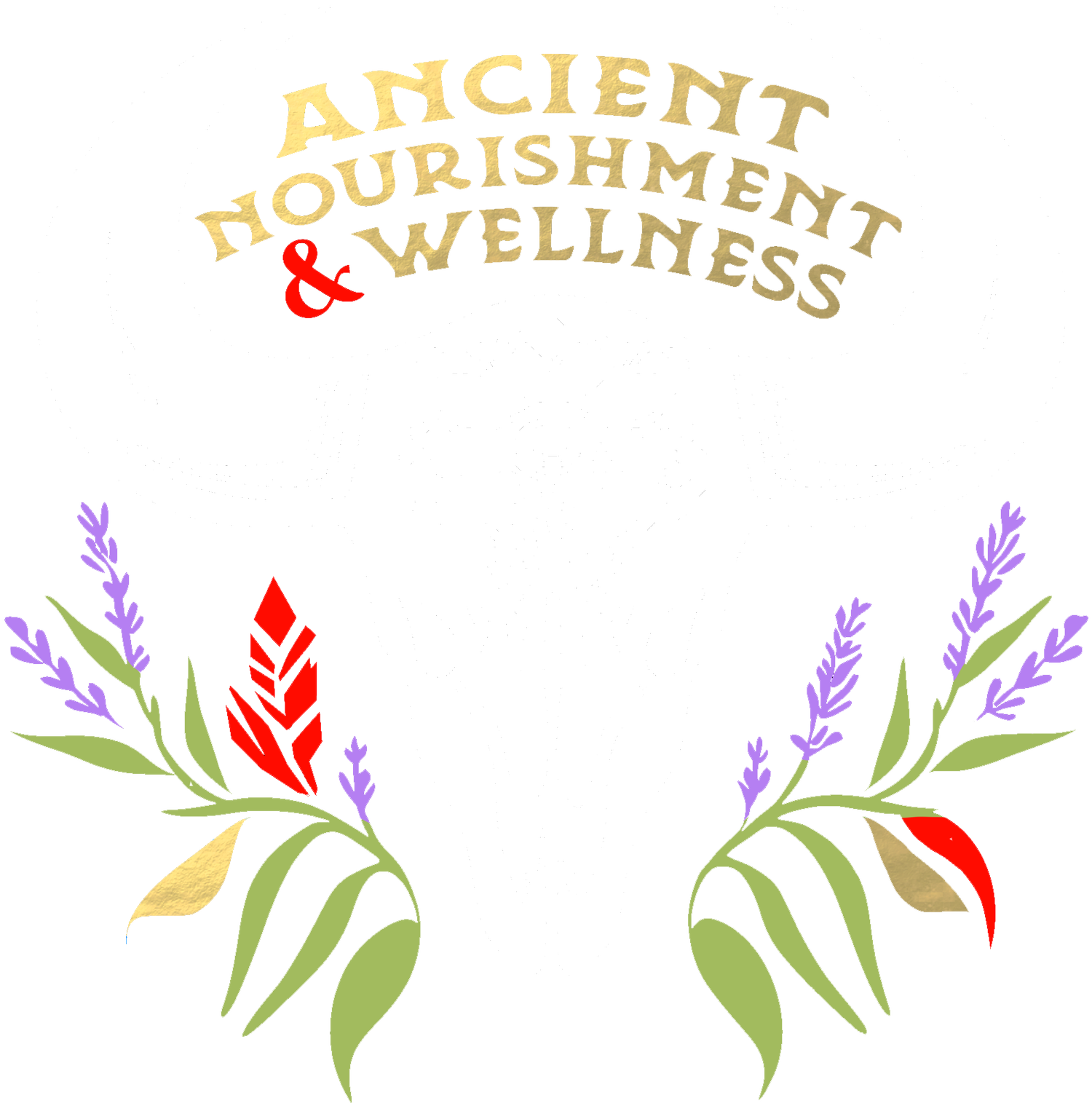Why Organ Meats Are the Missing Superfood—Especially for Women
One of the most powerful lessons Tibetan Medicine offers is this: your body is constantly giving you messages. The more we slow down and tune in — to how we feel after eating, what environments calm or stress us, and how our emotions affect our digestion or sleep — the more we can support our own healing.
This system teaches that seasonal eating, mindful living, and self-awareness are essential parts of staying well. You don’t need to follow a strict protocol. Instead, it’s about working with your body’s natural rhythms.
Simple Tips to Start Using Tibetan Wisdom Today
Eat with the seasons – Warmer, heavier foods in winter; lighter, cooling foods in summer.
Tune in after meals – Notice how different foods make you feel physically and mentally.
Balance your constitution – If you tend to feel anxious, choose grounding and nourishing foods. If you often feel sluggish, try lighter and spicier meals.
Use herbs and spices – Ginger, turmeric, cardamom, and black pepper are all used in Tibetan Medicine to support digestion and energy flow.
Create routine – Regular sleep, meals, and movement are crucial for balancing Wind energy, which governs the nervous system.
In our modern world of supplements and green powders, we often overlook one of the most powerful sources of real, ancestral nutrition: organ meats.
Once prized by traditional cultures across the world—from the Tibetan plateau to the African savannah—organ meats like liver and heart are nature’s true multivitamins. At Ancient Nourishment, we bring these sacred foods back into focus, especially for women seeking strength, balance, and deep wellness.
What Are Organ Meats?
Organ meats (or “offal”) include nutrient-dense parts of the animal—like liver, heart, kidney, and spleen. While they’ve fallen out of fashion in the West, these were the most treasured cuts in ancestral societies. Our ancestors intuitively knew what modern science now proves: organ meats are loaded with vital nutrients in forms your body can actually absorb.
Why Everyone Should Eat Organ Meats
Liver is one of the most nutrient-rich foods on the planet.
Packed with bioavailable iron, B12, retinol (active vitamin A), zinc, folate, and choline
Supports energy levels, immunity, detox, and cognitive function
Superior to plant-based multivitamins and synthetic supplements
Heart is a powerhouse for mitochondrial health.
Rich in CoQ10, B vitamins, iron, and selenium
Supports cardiovascular function, skin health, and energy metabolism
Why Women Especially Benefit
1. Blood-Building Iron + B12
Iron-deficiency is common among menstruating and postpartum women. Organ meats provide heme iron, the form your body absorbs best—paired with B12 for red blood cell production and energy.
2. Fertility + Pregnancy Support
Liver offers retinol, choline, folate, and B vitamins, all critical for hormone health, ovulation, and fetal brain development. It's one of the best foods for preconception and pregnancy.
3. Mood + Mental Wellness
Deficiencies in B12, folate, and iron are linked to depression, anxiety, and mood instability. Organ meats help nourish your nervous system, support dopamine/serotonin production, and stabilize emotions.
4. Postpartum Recovery
In many ancestral cultures, the liver was given to postpartum mothers to rebuild blood, energy, and vitality. It’s also a top source of choline, passed into breast milk for baby’s brain development.
5. Beauty from Within
Retinol (not beta-carotene), zinc, and collagen-building compounds support glowing skin, strong nails, and vibrant hair—not just cosmetic, but signs of deep internal nourishment.
How to Eat Organ Meats (Without the Intensity)
If you’re not used to the taste, don’t worry—we’ve got you. At Ancient Nourishment, our Ancient Nourishment Blend combines pasture raised bison muscle meat with 10% liver and 10% heart for a mild, easy-to-cook protein packed with hidden nutrients.
Try it in:
Ancient Ragu with spaghetti squash
Ancestral Italian meatballs or burgers
Protein-packed chili or taco filling
Nutrient-rich breakfast scrambles
Eat Like Your Ancestors, Thrive Like Never Before
Incorporating small amounts of organ meats—even just once a week—can radically shift your health. Real food, ancestral wisdom, and deep nourishment. That’s what we’re about.
Want recipes, ancestral nutrition tips, or personalized guidance? We’re here to help.
Let’s Keep the Conversation Going
Follow us on Instagram @ancientlywellnourished for recipes, ancestral food tips, nutrition and wellness rooted in tradition.
Tibetan Medicine for Beginners
Have you ever felt like your body responds to certain foods, climates, or even emotions differently than your friends or family? That’s not just in your head — ancient healing traditions, like Tibetan Medicine, have long understood that every person has a unique body constitution, and that health is about balance, not one-size-fits-all solutions.
What is Tibetan Medicine?
Tibetan Medicine — known as Sowa Rigpa, meaning “the science of healing” — is a holistic healing system that has been practiced for over 2,500 years. It blends wisdom from India (Ayurveda), China, Greece, and indigenous Tibetan knowledge to create a complete system for physical, mental, and spiritual wellness.
At its core, Tibetan Medicine is all about balance: between the body, the mind, our environment, and the natural rhythms of life.
The Three Energies: Wind, Bile, and Phlegm
Tibetan Medicine teaches that each of us is made up of three primary energies or "humors":
Loong (Wind) – Linked to movement, breath, circulation, and the nervous system.
Tripa (Bile) – Connected to digestion, metabolism, and body heat.
Beken (Phlegm) – Associated with stability, structure, and fluid balance.
We’re all born with a unique combination of these energies — our constitution — and when they are in balance, we feel vibrant and healthy. But when one becomes too strong or weak (from stress, poor diet, seasonal shifts, etc.), we may start to feel unwell, physically or emotionally.
Why Food is Medicine in Tibetan Wisdom
In Tibetan Medicine, food isn’t just about calories or nutrients — it's medicine for your specific constitution and current imbalances.
Think about it like this:
If you're always cold, tired, and bloated (a sign of excess Phlegm), warming and drying foods like ginger, garlic, and barley soup may help restore balance.
If you tend to get overheated, irritable, and have sharp digestion (a Bile imbalance), cooling foods like cucumber, melon, or light rice dishes may calm your system.
If you're anxious, spacey, and have erratic digestion (Wind imbalance), grounding and oily foods like sweet potatoes, stews, and warm milk with spices can bring you back into harmony.
Listening to Your Body: A Lost Art
One of the most powerful lessons Tibetan Medicine offers is this: your body is constantly giving you messages. The more we slow down and tune in — to how we feel after eating, what environments calm or stress us, and how our emotions affect our digestion or sleep — the more we can support our own healing.
This system teaches that seasonal eating, mindful living, and self-awareness are essential parts of staying well. You don’t need to follow a strict protocol. Instead, it’s about working with your body’s natural rhythms.
Simple Tips to Start Using Tibetan Wisdom Today
Eat with the seasons – Warmer, heavier foods in winter; lighter, cooling foods in summer.
Tune in after meals – Notice how different foods make you feel physically and mentally.
Balance your constitution – If you tend to feel anxious, choose grounding and nourishing foods. If you often feel sluggish, try lighter and spicier meals.
Use herbs and spices – Ginger, turmeric, cardamom, and black pepper are all used in Tibetan Medicine to support digestion and energy flow.
Create routine – Regular sleep, meals, and movement are crucial for balancing Wind energy, which governs the nervous system.
Final Thoughts
Tibetan Medicine isn’t just about herbs or treatments — it’s a way of living in deeper connection with yourself and nature. When you learn your constitution and eat in a way that supports your unique body, food truly becomes medicine. You don’t need to be perfect. Just begin by noticing. Tuning in. And honoring the wisdom your body already holds.
Returning to Ancient Roots: The Wisdom of Ancestral Eating.
In a world of fast food, synthetic ingredients, and endless fad diets, there’s something deeply grounding about returning to the way our ancestors ate. Ancestral eating isn’t just another health trend—it’s a nutritional philosophy rooted in the rhythms of nature, time-tested traditions, and a deep respect for where food comes from. It’s about nourishment, not restriction. Connection, not convenience.
What Is Ancestral Eating?
At its core, ancestral eating is the practice of honoring traditional foodways—eating the kinds of foods our ancestors would have recognized, prepared, and thrived on for generations. It emphasizes whole, unprocessed foods, traditional cooking methods, and a strong relationship with the land and seasons.
This way of eating isn’t about mimicking one ancient culture or subscribing to a rigid set of rules. Rather, it’s about tapping into the universal principles of nourishment that have guided human survival and vitality for thousands of years:
Seasonal, locally grown produce
Grass-fed, pasture-raised meats and wild-caught fish
Fermented foods for gut health
Nose-to-tail eating (yes, organ meats too!)
Wild herbs, roots, and naturally foraged foods
Proper preparation of grains, nuts, and legumes (soaking, sprouting, fermenting)
How It Nourishes Us
Our bodies haven’t evolved as quickly as the modern food system. Genetically, we are still wired much like our hunter-gatherer ancestors—thriving best on nutrient-dense foods from the earth, not ultra-processed convenience products.
Ancestral diets are naturally:
Anti-inflammatory
Rich in micronutrients and healthy fats
Supportive of gut health and immune function
Blood sugar balancing
Supportive of hormonal and metabolic health
What’s powerful about ancestral eating is that it shifts the focus from calories and macros to true nourishment. It invites us to consider not just what we’re eating—but how it was grown, prepared, and shared.
The Role of Seasonality
One of the most beautiful aspects of ancestral eating is seasonal alignment. Before refrigeration and global food transport, people ate what the land offered in each season. Spring brought bitter greens and cleansing herbs; summer offered fruits and fresh vegetables; autumn brought root vegetables, game, and grains; and winter was a time for preserved foods, fats, broths, and fermented nourishment.
Eating seasonally supports:
Better digestion – Your body naturally craves lighter, cleansing foods in spring and heartier meals in winter.
Nutrient density – Foods harvested in their natural season are more potent and flavorful.
Local ecosystems – Seasonal eating often supports local farmers and reduces environmental strain.
A deeper connection to nature’s rhythms – You begin to feel more rooted, aware, and attuned.
More Than Food—A Way of Living
Ancestral eating isn’t about perfection—it’s about intention. It’s about slowing down, cooking with your hands, gathering with others, and trusting the quiet wisdom of your body. It’s about asking: What would my ancestors have eaten in this place, in this season, to feel nourished, strong, and grounded?
As we return to ancient ways of nourishment, we don’t just heal our bodies—we reconnect with something much older and wiser than diet trends: the land, the seasons, and our true selves.
Want to bring ancestral eating into your daily life? Start by shopping at your local farmers’ market, cooking a seasonal recipe, or sipping on a warm mug of mineral-rich bone broth. Your body will remember.
The Rhythm Reset: Align with Nature to Support Fat Loss & Hormonal Balance
Discover how syncing your sleep, meals, and movement with your circadian rhythm can improve body composition, balance hormones, and boost overall vitality—without relying on extremes. This nature-based approach offers real, sustainable change from the inside out.
Start honoring your body’s internal clock today—read the full guide and begin your rhythm-aligned reset.
Reclaim Your Energy: 5 Ancient Practices to Combat Burnout and Restore Balance
If you're feeling inflamed, exhausted, or disconnected, this is your invitation to reset. Explore five time-tested wellness rituals—from grounding meals to breathwork—that bring your nervous system and energy back into alignment.





